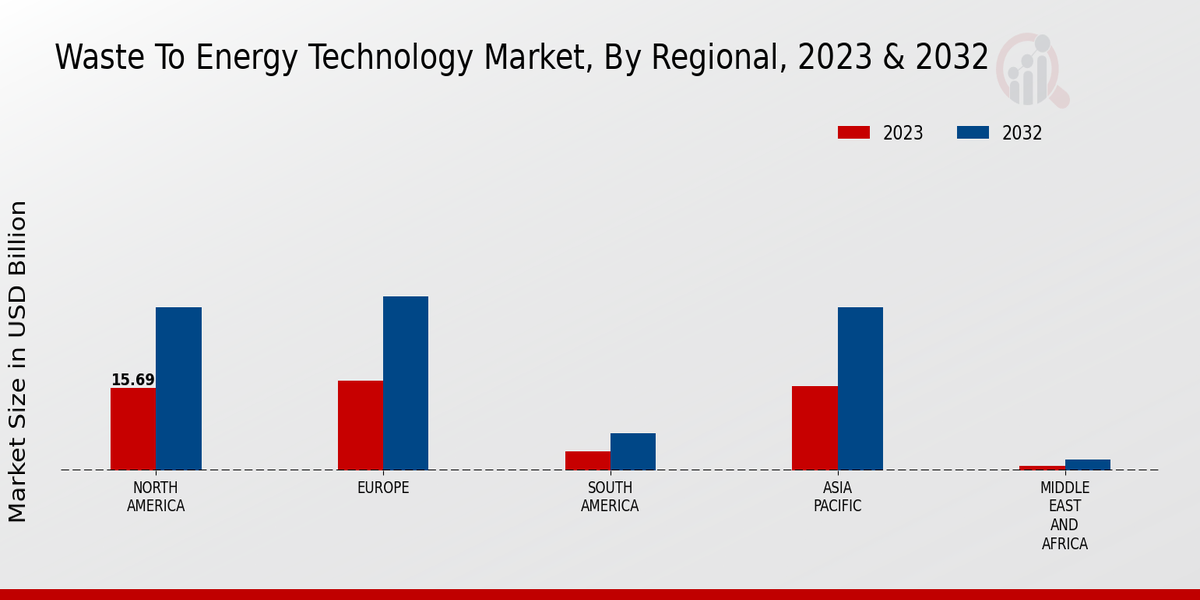Economic Incentives
Economic incentives play a crucial role in driving the Waste to Energy Technology Market. Governments and private sectors are increasingly recognizing the financial benefits of investing in waste to energy projects. Incentives such as tax credits, grants, and subsidies can significantly lower the initial capital costs associated with these technologies. In 2025, it is anticipated that such financial mechanisms will encourage more municipalities to adopt waste to energy solutions, thereby enhancing waste management and energy production. The Waste to Energy Technology Market is likely to experience accelerated growth as these economic incentives make projects more financially viable, promoting a shift towards sustainable energy practices.
.webp
Rising Energy Demand
The increasing The Waste to Energy Technology Industry. As populations grow and industrial activities expand, the need for sustainable energy sources intensifies. In 2025, energy consumption is projected to rise by approximately 30 percent compared to previous years. This surge necessitates innovative solutions, and waste to energy technologies present a viable option. By converting municipal solid waste into energy, these technologies not only address waste management challenges but also contribute to energy supply. The Waste to Energy Technology Market is thus positioned to play a crucial role in meeting this escalating demand, potentially reducing reliance on fossil fuels and enhancing energy security.
.webp
Environmental Regulations
Stringent environmental regulations are increasingly shaping the Waste to Energy Technology Market. Governments worldwide are implementing policies aimed at reducing landfill waste and promoting sustainable waste management practices. For instance, many regions have set ambitious targets for waste diversion from landfills, which can exceed 50 percent by 2030. Such regulations create a favorable environment for waste to energy technologies, as they provide a pathway for municipalities to comply with these mandates. The Waste to Energy Technology Market stands to benefit from these regulatory frameworks, as they encourage investment in technologies that convert waste into energy, thereby fostering a cleaner environment and promoting circular economy principles.
.webp
Technological Innovations
Technological innovations are a driving force behind the evolution of the Waste to Energy Technology Market. Advances in conversion technologies, such as anaerobic digestion and gasification, enhance the efficiency and effectiveness of waste processing. In 2025, the market is expected to witness a growth rate of over 10 percent, largely attributed to these innovations. Enhanced technologies not only improve energy recovery rates but also reduce emissions associated with waste processing. As these technologies become more accessible and cost-effective, they are likely to attract investments and facilitate the expansion of the Waste to Energy Technology Market, ultimately contributing to a more sustainable energy landscape.
.webp
Public Support for Sustainability
Public support for sustainability initiatives is a vital driver for the Waste to Energy Technology Market. As awareness of environmental issues grows, communities are increasingly advocating for sustainable waste management solutions. Surveys indicate that a significant percentage of the population favors waste to energy projects as a means to reduce landfill use and generate clean energy. This public backing can influence policymakers to prioritize waste to energy technologies in their agendas. In 2025, the Waste to Energy Technology Market is expected to benefit from this heightened public interest, as community engagement and support can lead to increased funding and implementation of waste to energy projects.
.webp



















Leave a Comment